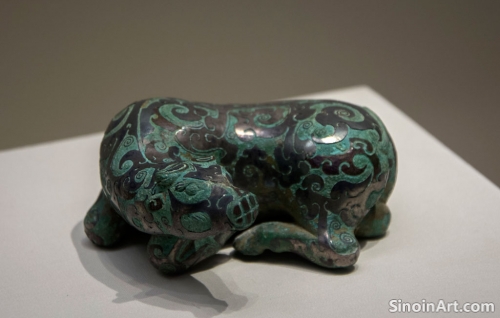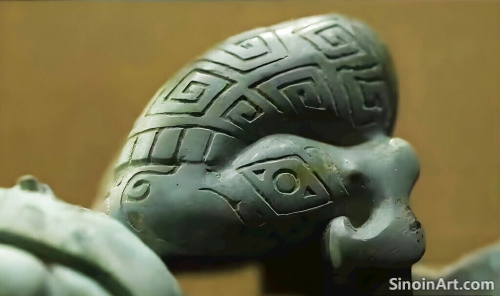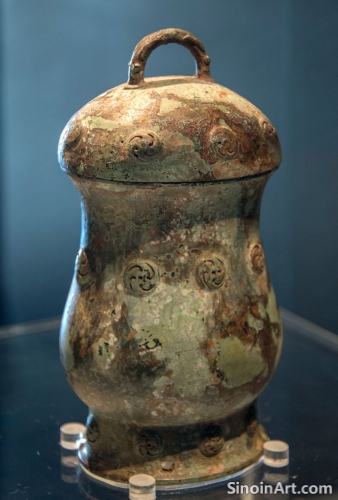Bronze Ware and the Ancient Chinese Elite: Luxury, Status, and Power
|
Bronze ware in ancient China was not just a functional material; it was also a powerful symbol of wealth, status, and power, primarily used and controlled by the elite classes, and highlighting their central place in the social hierarchy. The careful control of resources and the skill needed to produce these items helped to ensure that they remained important tools for social and political dominance.  The possession of finely crafted bronze vessels, weapons, and other objects was a key signifier of social status, with the quality and quantity of these items reflecting an individual's position in ancient Chinese society. These objects became a powerful visual symbol of power, status, and wealth. The possession of these artifacts helped to reinforce the social stratification of the time.  The display of bronze ware during rituals, ceremonies, and other important events also served to reinforce the power and authority of the elite, showcasing their wealth, status, and their connection to both the earthly and spiritual realms. The manner in which these items were displayed helped to underscore their importance. The elaborate care given to presentation and performance helped to further convey the power of the ruling class.  The study of bronze ware and its association with the ancient Chinese elite helps to illuminate the social, political, and economic dynamics of the time, highlighting how material culture was used to maintain social hierarchies and to legitimize power. The interplay between the visible display of power and the actual authority of the ruling class is a key element in understanding the society of the era. |
Tag : bronze elite, ancient Chinese wealth, social status, power symbols, luxury artifacts
Related information
- Bronze Vessels and Music Performance in Ancient China: A Multi-Sensory Experience
- Bronze Ware and the Development of Ancient Chinese Mathematics: Measurement and Calculation
- The Evolution of Bronze Vessel Forms in Ancient China: From Simplicity to Complexity and Back Again
- The Production and Use of Bronze in Ancient Chinese Musical Instruments: Harmony and the Cosmos
- The Preservation of Bronze Artifacts: Understanding the Chemistry of Corrosion and Deterioration
This article explores the combination of bronze vessels and music in ancient Chinese ritual performance, highlighting how these combined to create a multi-sensory experience that engaged both visual and auditory senses, and enhanced the power of ritualistic ceremonies.
This article explores the use of bronze in ancient Chinese mathematics, highlighting its role in creating measuring instruments, illustrating mathematical principles, and revealing the connections between bronze, technology, and mathematical understanding.
This article explores the evolution of bronze vessel forms in ancient China, highlighting the shift from simple early shapes to more complex and ornate designs, and then later, a move back to simpler forms, reflecting changes in technology, aesthetics, and cultural practices.
This article explores the use of bronze in ancient Chinese musical instruments, highlighting the technical skill involved in their creation, the cosmological beliefs they represent, their role in ritual practices, and the interplay between music, spirituality, and the material world.
This article explores the chemistry of bronze corrosion and deterioration, highlighting the scientific principles behind conservation efforts, and the methods and techniques used to stabilize and preserve these artifacts for future generations.